D-Stream WAMP-200SB
The new D-Stream WAMP-200SB stands as the best sub-$1000 amplifier I’ve had the pleasure of listening to. It’s engaging, balanced, and produces room filling sound on a good variety of speakers – both compact and floor standing. It’s easy to use, beautifully designed and finished, and is quite possibly the smallest amplifier you have seen. Read our comprehensive review to find out why this new amplifier sounds so good how it will improve many systems.
French Flair - the new D-Stream WAMP 200SB Digital amplifier - NZ$695 including GST.
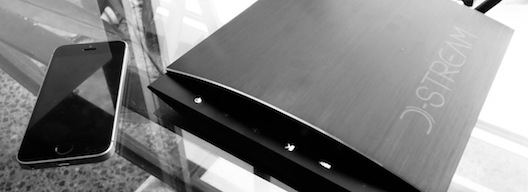
All about the new D-Stream WAMP-200SB Digital and Wifi amplifier. Read our comprehensive review to find out why this new amplifier sounds so good how it will improve many systems.
The form of this beautifully compact new amplifier has a heritage in French design, taking cues from the minimalism of Le Corbusier, the originality of Philippe Starck, and the classic sleekness of the Citroen DS. The result is a completely modern component with a timeless line.

The sleek curved brushed black aluminium casework with silver edge accents, intuitive and breathtakingly simple front panel controls and display, look unlike any other entry level amplifier.
D-Stream is an innovative French and Chinese owned company. The D-Stream software applications are developed in France, while all of the product hardware is manufactured at the D-Stream facility in China. The unique advantage of D-Stream is that it successfully combines French creativity and design with efficient engineering techniques.
Who is this amp designed for?
At first glance, the petite D-Stream WAMP-200SB looks like a niche product for the design conscious - but after listening for several weeks in several systems with a variety of music, it’s obvious that there are a many ways to enjoy this amplifier - it does far more than any other component at this price level. Some of my suggestions…
Your first real hifi system: If you’ve made do with a bluetooth speaker or headphones and your smartphone as a source, then the sound you’ll get from the D-Stream and a pair of speakers will be a revelation - you’ll hear much more, and have fun doing it.
An introduction to streaming and replacement for an old amplifier: Nothing lasts forever and many existing amplifiers simply don’t sound that great anymore - The D-Stream will breath new life into your speakers, take some existing sources and introduce you to user friendly wireless operation, either by Bluetooth or Wifi. You don’t have to tackle everything at once but once you work your way into all the D-Stream’s features and choices you’ll never look at an amplifier in the same way again. Don’t underestimate the performance the D-Stream delivers - I’ve been mightily impressed when making direct comparisons to much more costly new products.
A TV sound solution: New TVs get skinnier all the time and the sound quality becomes more and more compromised. The mass market solution of a cheap sound-bar is little compensation. But add the D-Stream amplifier (connected via optical) and a decent pair of speakers and you’ll enjoy a far more expansive and clearer sound for movies, news, sport and games. Not only this but you’ll be able to really enjoy music listening from the same system - either with videos or from any other source or streaming.
A multi-room or whole house system: If one D-Stream is great, two or more are even better. With performance and features that surpass both Sonos & Bose, at a significantly lower price, this new amplifier can be used to improve existing whole home multi-speaker systems or specified in new builds - combined with our broad range of in-build Monitor Audio speakers, you can have great sound anywhere with full wireless control. The industry standard connections of the D-Stream and open software will allow you to make future changes and upgrades easily. The small size and wifi communication allow you to position the D-Stream almost anywhere.
Commercial installations. Simplicity of operation, reliability and low cost are usually the first three requirements for any restaurant, retail or commercial setup - The D-Stream WAMP-200 ticks all of these boxes, giving you continuous, easily controlled music flowing from steaming services like Spotify or your own selections stored on phone or computer. Your clients and staff will all be happier.
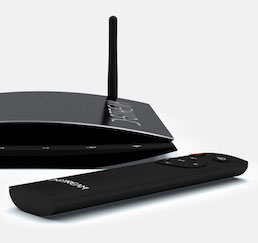
Embracing Digital - Inside the D-Stream.
Understanding the D-Stream WAMP-200SB requires a re-think of what an amplifier actually does and the level of connectivity required - while there are 3 physical inputs (Ethernet, Optical and Analogue) and 2 types of wireless input (Bluetooth and Wifi), the array of software controlled inputs via the ap make conventional amplifiers look threadbare - you have…
Streaming services - Spotify, Tidal, Napster and more
Internet Radio
Podcasts
Music stored on your home network, smartphones and other wifi connected devices
The day of the traditional little entry level integrated analogue amplifier is effectively over - Building an amplifier with the traditional layout of controls and selectors on the front panel, inputs and outputs on the back and numerous discrete components laid out on a board inside, used to be the way to do things. Plus the Class AB topology at the heart of most amplifiers is less than optimal - energy inefficient, requiring heat dissipation and supporting power supplies. But no more...
D-Stream embrace digital technology. Rather than treating digital as an add-on to an existing analogue design, they have worked from the ground up to create a completely modern entry level amplifier with digital at the centre and reap all the benefits that flow from this.
At the heart of the D-Stream design is the Texas Instruments Closed Loop Class D amplifier. This is a single chip that effectively replicates much of what you’ll find in a conventional amplifier. The chipset runs at a max. frequency of 768 KHz. Using high switching frequencies makes the listening experience similar to class "A". Being Class D, this makes the D Stream highly efficient so less power is required and no matter how you run it, the WAMP 200 SB barely even gets warm, let alone hot. Almost all the power goes to where you want it - your speakers.
Rather than relying on a large inbuilt power supply to deal with AC mains power, D-Stream use a slim in-line switching power supply. This delivers a clean, regulated 25.5V DC to the WAMP-200SB and works worldwide. Also by removing the power supply from within the amplifier, there is much better immunity to mains borne noise and buzz, less heat to dissipate and reliability is improved. The result is and amplifier that is both better sounding and smaller.
While this all sounds simple and easy, the reality is that D-Stream have devoted 3 years of research and development to the launch of this innovative product. The TI amplifier section may be one internal part of the design but there is also still the ability to control and improve the sound quality produced by optimising both power supply and input signal and I believe this is where D-Stream are making their own contribution to the end sound quality.
Having corresponded with their CEO, I now understand that the speed of digital processing is a key point of innovation in this design. This maintains the chain of Higher Resolution from input right though to final output. The choice of a modern chipset by D-Stream, embedding a powerful DSP and the legendary Burr-Brown DAC delivers a serious performance advantage over commonly used solutions.
The Sound.
The sound of the D-Stream WAMP-200 is quite something - Straight out of the box, we were struck by the clarity and even balance of the sound. We can draw direct comparisons with both the NuForce DDA-100 and Quad Vena (and looking back even further the NuForce Icon range), all of which produced a similar initial impression. There is an intentional focus on getting the midrange performance right. Vocals and instruments have body and warmth that suggest more costly products.
It is always difficult putting a product that is clearly priced to be entry level, into systems that operate to a higher degree of expectation. So we intentionally paired the D-Stream WAMP-200 with Monitor Audio’s smallest Silver 6G model - the 50. Like the D-Stream, these are flawlessly finished and are an easy load for any amplifier. It worked beautifully. While we could have done likewise with Bronze series speakers and looked to craft a good sounding complete system for even less, I felt that the significant saving made with the D-Stream allowed us to go further with speakers that we might not have previously considered.
Because it was easy, the first source used was Bluetooth from my iPhone. This required no network set up - just the usual pairing which worked perfectly first time and away we went. With a 24bit MP4 recording of @Peace, the D-Stream didn’t miss a step - I’m continually impressed not just by how good Bluetooth is getting but also how it really isn’t far short of a direct connection in terms of absolute audio quality if you take a little care with file type choice. With a rated 60 watts per channel, there is plenty of real drive.
When moving from between Bluetooth via my iPhone to a direct Optical digital connection via the Questyle QP-1R there is an immediate upswing in sound quality. While the implementation of Bluetooth is particularly good, the D-Stream responds to even better quality inputs.
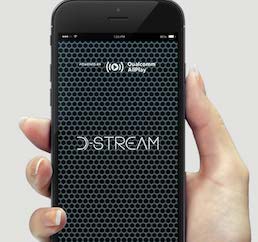
The D-Stream WAMP-200 is clearly designed for a modern networked home and while it more than justifies itself in simple systems, the moment you make the wifi and internet connection, a whole new world of possibilities - and performance - opens up.
The free D-Stream Ap is a core part of the amplifier. This also took 3 years of hard devoted work by D-Stream engineers. Based on the Qualcomm® AllPlay standard - an open eco-system that works across platforms, the D-Stream Air application lets you play your music library from your smartphone or tablet or NAS, gives access to on-line music services such as Spotify and Tidal and to 100000 Radios internet & Podcasts.
And the Ap provides comprehensive multi-room capabilities allowing you to control not just the WAMP200SB but also many other devices which can be added to the network in the future.
It’s impossible to beat the combination of Ap and smartphone as a remote control, but it’s worth knowing that the D-Stream does come with a simple IR remote control for use in non-networked systems.
The front touch panel is a model of minimalist design. There are 6 illuminated symbols covering on, volume up and down, pause and resume, and select input. The 6th one indicates wifi or bluetooth connection status. Each mode of replay is colour coded.
When turning on for the first time the D-Stream takes around 1 minute to organise both itself and network connections. The display flashes to indicate this. When coming out of standby operation is close to instantaneous, with the amplifier going back to the last input and settings used.
There are two rear mounted wifi aerials - these make the D-Stream look a little cute or even insectile but do a lot to ensure reliable reception and range. According to the manual they are best slightly angled out.
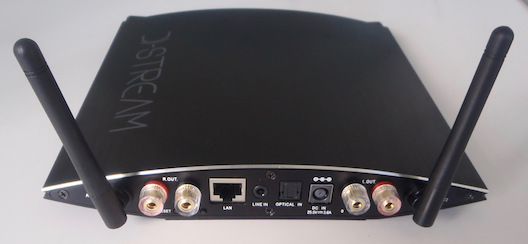
Network connection is straight-forward and there are several means of doing this - using WPS, connection via browser on either home computer or smartphone. Piece of cake.
In the past we might have used Sonos to do some of these things but there are key differences to that concept. First and foremost D-Stream WAMP-200SB has been built as a audiophile level product - it sounds much much better, does much more, and costs considerably less than the Sonos Connect Amp.
The AllPlay standard is not exclusive to D-Stream; it’s an open and much less restrictive approach makes far more sense in a quickly changing world - development is faster and costs are shared more equitably.
The real competition for the D-Stream WAMP 200 isn’t other similarly priced amplifiers or Sonos - The D-Stream is clearly a much better proposition. It’s the latest generation of Bluetooth speakers such as the new European Vifa models which do sound astonishingly good and have plenty of cool tricks.
So why is it a better option? The ability to match with some really good speakers - the latest Monitor Audio and Sonus faber models being obvious examples from specialist manufacturers who consistently deliver superior sound quality, finish and reliability. Yes, they cost more but you really do get more in every regard - choice of size, style finish and performance.
From any of these options, the stereo sound from a pair of speakers is always going to be better than a single Bluetooth speaker and while it’s now possible with many to set them up as a pair, the performance advantage of D-Stream and a carefully matched pair of speakers is still compelling.
The connectivity of the WAMP-200 is also a major plus - while you may only use some of it’s connections, wifi capabilities or Ap functions at first, to have the ability to add and change should always be valued.
As well as the digital and wifi connections, the WAMP200SB has an auto-sensing analogue input. The standard of this is consistent with the digital inputs - I’m assuming the analogue is converted to digital and when fed directly from my trusty Questyle there was a difference in presentation between optical and analogue - the later being warmer but this may also be a function of the very high level of conversion within the Questyle. That said, given the choice I preferred the digital route as there was better precision and focus. For use with turntables, the choice of phono stage and cartridge will ultimately determine what you get out and we can have that discussion later.
Further listening.
Good as the D-Stream WAMP-200SB sounded initially, after two weeks I was finding the sound greatly improved. In my first assessment I felt the Monitor Audio Silver 50 to be a better match than the more demanding new top end model - the Studio. The combination of a 4 ohm load and ribbon tweeter seemed to result in a somewhat clinical sound. Yet when reconnected 2 weeks later there was a far richer and more solid presentation. At this point it was obvious that the D-Stream is even more capable than we’d hoped. As I’ve found previously with both DACs and Class D or switching amplifiers, the run in period can be extended and the way the sound changes is unlike that of conventional analogue amplifiers.
Some recent downloads sounded particularly good - the new releases from Wellington band Womb, Dunedin’s Astro Children and Indi’s 'Precipice' album all captured my attention through the D-Stream, with clarity, warmth and quite remarkable bass at times.
We won’t pretend that the D-Stream is a performance equal to our best amplifiers - the NuPrime models have more scale, detail, better soundstage definition, dynamics and power delivery. What does get me is that the overall feel of sound, the tone, and listenability of the D-Stream is a remarkably close approach, and that I do genuinely enjoy listening to music played through it.
If anything I’d suggest that the differences in DAC might be as much of an influence on the character of sound as anything. Via the TI internals, D-Stream employ a Burr-Brown DAC - the brand favoured by many UK based designers for it’s warmth and musicality.
Each DAC seems to present a slightly different version of the same narrative, placing emphasis on different threads of the music, instrumentation and vocals. And laid over this you have the unique voice of the particular product. It is possible that I’m over-thinking what’s behind the performance of this amplifier, but I have to say, given several weeks of continuous use, I’m impressed.
Regardless of how they do it, the D-Stream WAMP200SB does make music, and plenty of it.
This is unusual for a relatively affordable amplifier and illustrates that the D-Stream is a serious product targeted at critical listeners. And while casual listeners may not care or be cynical, it is there for anyone to hear. The D-Stream will make a believer out of you.
The diminutive scale of the D-Stream means most will likely be matched to compact loudspeaker systems. But on their own site, D-Stream picture the floor standing Monitor Audio GX-200 as a likely match. So given I’ve got the newer Silver 300 model on hand, why not see what happens?

With a 60 watt rated output, there were no problems at all - the extra bass extension provided was reflected back in an impressively proportioned room-filling sound. I’ve heard plenty of more costly amplifiers that have sounded threadbare, flat or just boring in this setting. The D-Stream remained engaging. The warmth of the full floor standing 3-way system combined with the light touch of the D-Stream made for a very happy match. It would be easy to make the case for going as far with speakers as you can given the combination of high performance and low cost that the D-Stream offers.
At the same time that I was evaluating the new D-Stream, I’d finally got around to re-terminating our KLEI speaker cables with the new KLEI Harmony banana plugs - the results of this are a story in itself but it’s an illustration of the quality and resolution of this amplifier that this improvement was made so obvious.
I really like the speaker cable terminals on this little amplifier - they look barely able to accept the standard 4mm plug but do so with ease. Given what we have learned with KLEI, there is a case to be made for less metal in both plugs and sockets. Most binding posts are just so much audio bling, chunky and gold plated, which is all well and good when you’re connecting cables that could double as tow-ropes, but we’ll take quality over quantity any day. The D-Stream binding posts do the job, are well insulated and while they can be used with raw cable ends, we have plenty of both the original KLEI instrument plugs and the better new Harmony plugs which are perfect for this termination.
Being both small and light, the choice of a smooth rubber base on the D-Stream makes a lot more sense than the usual approach of four feet - it’s more stable, reduces microphony (vibration induced noise) and keeps the design sleek.
Within the controlling Ap there are options for fine tuning the sound of the D-Stream. While all my critical listening was done with the equaliser set to a flat response, there will be situations with speakers or rooms that can benefit from this. Unlike traditional physical bass and treble controls, this is software controlled so doesn’t impact on sound quality.
You can selectively adjust the sound of 5 frequency bands from bass upwards.
100Hz Bass: Lower registers of rhythm instruments such as drums and bass guitars, boosting gives a stronger rhythm, decrease to reduce ‘boominess’.
350Hz Upper Bass: Low order harmonics of most instruments, boosting gives more weight to instruments, reducing gives a lighter sound.
1kHz Midrange: Affecting vocal and various horn and string instruments, boosting gives prominence, reducing gives opposite effect.
5kHz Presence: Perceived clarity or definition of sound, boosting makes music more alive, reducing gives a more laid back sound.
11Khz Brilliance: High order harmonics which gives sound the sparkle and air, boosting gives a more open sound, decrease to reduce 'edginess'.
In addition to this there are several genre related presets you can easily select as you fine tune your new system.There is nothing wrong with this approach especially if used with subtlety and a critical ear - it’s far better than trying to do the same thing with component or connection changes and allows you to easily address personal preference, variations in recording quality, component and room interactions.
Power efficiency. As we’ve already pointed out, this is a highly efficient Class D design so when running, power consumption is very low by conventional standards, and the amplifier remains cool. Maximum power consumption at full output is just 120 watts - and most of that is heading into the speakers. When not in use there are two standby modes - the network standby maintains this connection allowing quick start up and consumes around 3 watts. Then there is a deep standby which you activate by touching the on/off key for 3 seconds which takes consumption down to less than 0.5 watts. Deep standby also activates after 72 hours without use. Power efficiency and reliability run hand in hand - less heat produced means less thermal ageing of internal components and cycles of expansion and contraction.
System suggestions.
1. Compact system. Match the D-Stream WAMP-200SB with the new Monitor Audio Silver 50s on a shelf or table - NZ$1895 including Kimber speaker cable.
2. High Resolution system. When you’re serious about hearing every last detail and making the most of 24-bit + recordings. D-Stream plus the Monitor Audio Studio speakers NZ$3195 (optional stands $995)
3. For larger rooms and bigger sound. The new Monitor Audio Sliver 300 3-way floor standing speakers plus the D-Stream WAMP-200SB - with cables included - NZ$3895.
4. For classical fans or the ultimate office system - The Sonus faber Chameleon B shelf mount speaker delivers unparalleled midrange richness and perfectly balances the D-Stream’s clarity and ease. NZ$2695 inclusive.
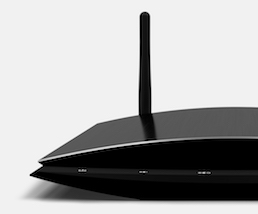
Conclusion.
On sound quality alone, the new D-Stream WAMP-200SB stands as the best sub-$1000 amplifier I’ve had the pleasure of listening to. It’s engaging, balanced, and produces room filling sound on a good variety of speakers - both compact and floor standing. It’s easy to use, beautifully designed and finished, and is quite possibly the smallest amplifier you have seen. My two demonstration units have performed faultlessly and identically.
This would be enough to warrant our firm recommendation. But there is a lot more to the D-Stream story - the streaming, wifi and multi-room abilities make this amplifier even better. As either an introduction to real hifi, or as a way to breathe new life into an existing system, The D-Stream WAMP-200SB has exceeded all our expectations and we’re confident you’ll be thrilled with how it sounds and performs in your own home.
John Ransley - Totally Wired
Phone
Cell Phone
0800 909 101
(+64) 03 4790 444
(+64) 021 963 321
info@totallywired.co.nz
Direct Contact
John Ransley and Carolyn Guytonbeck are the principals behind Totally Wired. It’s our own business and we take pride in building something worthwhile.
If you want to contact us directly per mail:
